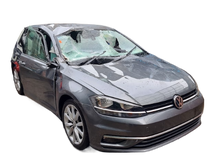
The Future of Car Parts: 3D Printing and Beyond
Frequently Asked Questions
1. What is the role of 3D printing in automotive manufacturing?
2. How does 3D printing contribute to cost efficiency in car parts production?
3. What are the advantages of customization in automotive parts using 3D printing?
4. How is the future of car parts manufacturing expected to change due to technological advancements?
5. What skills will be important for the future workforce in the automotive industry?
The automotive industry is undergoing a significant transformation, thanks to technological advancements and innovative materials that are reshaping the landscape of car parts manufacturing. Traditional methods are evolving, giving rise to 3D printing and other cutting-edge technologies that promise an exciting future for car enthusiasts, manufacturers, and eco-conscious consumers alike. This blog explores the impact of 3D printing on the future of car parts, alongside other innovative trends that are set to change the industry forever.
Understanding 3D Printing in Automotive Manufacturing
3D printing, also known as additive manufacturing, is a process that creates three-dimensional objects layer by layer from a digital model. This technology has made its way into various industries, including aerospace, healthcare, and now automotive manufacturing. It presents several advantages, paving the way for revolutionary change.
Cost Efficiency and Reduced Waste
One of the most significant benefits of 3D printing is its ability to reduce manufacturing costs. Traditional car parts production often requires expensive molds and tooling, which can be financially infeasible for small runs or custom parts. 3D printing eliminates the need for these molds, lowering upfront costs and making it viable to produce low-volume or custom components.
Additionally, 3D printing uses materials more efficiently than traditional methods. By adding only the necessary material layer by layer, it significantly reduces waste, contributing to environmentally sustainable practices in manufacturing.
Customization and Personalization
In an age where consumers desire products tailored to their unique preferences, 3D printing enables unprecedented levels of customization. From bespoke interior components to personalized design elements, car owners can create parts that reflect their personalities and automotive needs.
Developers and small businesses can leverage this technology to produce specialized parts that accommodate niche markets or rare vehicles, offering solutions that traditional manufacturing cannot achieve. Imagine being able to print a custom strut brace or a specific dashboard component just for your model—3D printing makes this possible.
Speed and Efficiency in Production
Time is of the essence in the automotive world—both in the fast-paced commercial environment and the ever-demanding expectations of consumers. Traditional manufacturing processes can be slow and labor-intensive. In contrast, 3D printing can considerably speed up production timelines.
Rapid Prototyping
3D printing facilitates rapid prototyping, allowing designers to create and test prototypes quickly. This enables manufacturers to refine designs more effectively and respond faster to market demands. By reducing the time it takes to move from conception to production, companies can remain competitive and agile in an evolving marketplace.
On-Demand Manufacturing
One of the most exciting prospects of 3D printing is the potential for on-demand manufacturing. Instead of maintaining large inventories of spare parts, manufacturers can print components as needed. This not only cuts costs associated with storage but also minimizes surplus and outdated inventory.
Innovations Beyond 3D Printing
While 3D printing is a game changer, it is not the only technological innovation revolutionizing the automotive industry. Various new technologies complement 3D printing, enhancing efficiency and driving increased performance across the board.
Smart Manufacturing with IoT
The Internet of Things (IoT) is impacting nearly every industry, including automotive manufacturing. IoT devices allow manufacturers to collect and analyze data, monitor production processes in real time, and make informed decisions quickly. This integration leads to reduced downtimes and improved quality control because issues are detected and addressed swiftly.
Artificial Intelligence in Manufacturing Processes
Artificial Intelligence (AI) is another transformative technology paving the way for advances in automotive manufacturing. AI can enhance designs based on historical data, optimize supply chains, and predict maintenance needs—ensuring that parts are manufactured and deployed when and where they're most needed.
The Shift Towards Sustainable Practices
As the global focus shifts towards sustainability, the automotive industry must adapt to meet new environmental standards and consumer expectations. Innovations in manufacturing must consider reducing carbon footprints and promoting eco-friendly materials.
Use of Recyclable Materials
The future of car parts could see a surge in the use of recyclable or bio-based materials, particularly in conjunction with 3D printing. This shift not only promotes sustainability but also taps into the growing consumer demand for eco-friendly products. Manufacturers exploring such materials can strengthen their reputation and appeal to eco-conscious consumers.
Energy-Efficient Production Processes
Innovations in production processes are also leading to more energy-efficient methods. Advances in machinery and software are designed to optimize energy use, ensuring that manufacturing not only produces quality parts but does so with a reduced environmental impact.
The Impact on Supply Chain Models
As 3D printing and other technologies gain prominence, supply chains are likely to evolve dramatically. Traditional supply chain models depend heavily on mass production and long-distance transportation of parts. However, the future points towards localized manufacturing and distribution, reducing transportation costs and emissions.
Localized Production Models
With 3D printing, car parts can be produced closer to consumers or repair facilities. This shift facilitates more agile supply chain models, significantly reducing lead times and increasing responsiveness to customer needs.
The Rise of Distributed Manufacturing Networks
Distributed manufacturing networks allow manufacturers to set up smaller, localized production sites that can print parts on demand. This network could lead to more resilient supply chains, capable of rapidly adapting to changes in consumer behavior or disruptions caused by global events.
The Future Workforce
With the advent of these new technologies, the automotive industry will undoubtedly require a workforce equipped with new skills. As traditional roles evolve, the demand for tech-savvy professionals who can work with advanced manufacturing methods will increase.
Skills and Training Opportunities
Educational institutions and employers must collaborate to create training programs that equip workers with the skills necessary for this new landscape. Whether it’s mastering CAD software for design or understanding IoT systems for monitoring production, the future workforce must be adaptable and ready to embrace rapid technological changes.
Innovation and Collaboration
As industry boundaries blur, collaboration between companies, startups, and academia will become crucial for driving innovation. This collaboration fosters an environment of creativity, leading to breakthroughs in materials, manufacturing processes, and design techniques that will shape the automotive parts market in the coming years.
Fasten Your Seatbelts: The Journey Ahead
The future of car parts manufacturing is bright, thanks to groundbreaking advancements in technology like 3D printing, IoT, and AI. As the industry shifts towards sustainability and efficiency, manufacturers and consumers alike can anticipate a wave of innovation that transforms not only the way car parts are made but also the entire automotive experience.
Embracing these changes will be key for businesses that wish to remain relevant and competitive in this evolving landscape. The journey ahead is filled with potential, and the car parts industry is just getting started. Buckle up—exciting times are on the horizon!





















